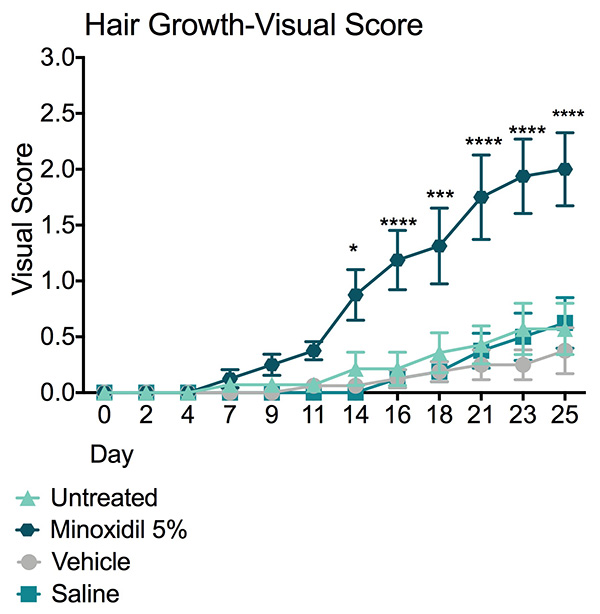Alopecia Model and Hair Growth Assay
Discover how Melior’s unique phenotypic screening platforms can uncover the untapped value of your candidate therapeutic
Alopecia is the medical description for the loss of hair from the head or the body. There are many forms of alopecia, with androgenic alopecia and alopecia areata being the most common. Although alopecia is not life-threatening, it can be life-altering and can produce a profound psychological impact on those afflicted by the disease.
There are several drugs that promote hair growth including Minoxidil (Rogaine®). Nonetheless, the limited effectiveness of available treatments and side effects experienced by some individuals create an ongoing medical need for better agents in the area of hair regrowth discovery.
The data below show the effects of hair regrowth in our validated mouse alopecia model using Minoxidil as a validating agent. We have also validated this model with Finasteride (Propecia®).

Hair Growth Assay /Alopecia Model. After hair removal, mice were administered Minoxidil or vehicle for 25 days and hair re-growth monitored and visually scored. The figure shows the time course of hair re-growth and the effects of Minoxidil. (As early as 14 days after initial treatment, Minoxidil significantly increased hair growth relative to vehicle treatment. This effect was sustained throughout the study). Data are mean ± SEM; ***p<0.0001 Untreated vs. Minoxidil. (N=12).
Scoring system: Hair growth scoring system: 1- initial state; 2- short, visible hair; 3- sparse, long hair; 4- dense, long hair; 5- complete hair growth.
This model is typically run over about a 25 to 30 day period and is most commonly performed in mice. Ideal group sizes range from 8 to 12 animals.



 Interested in running a Hair Growth study?
Interested in running a Hair Growth study?